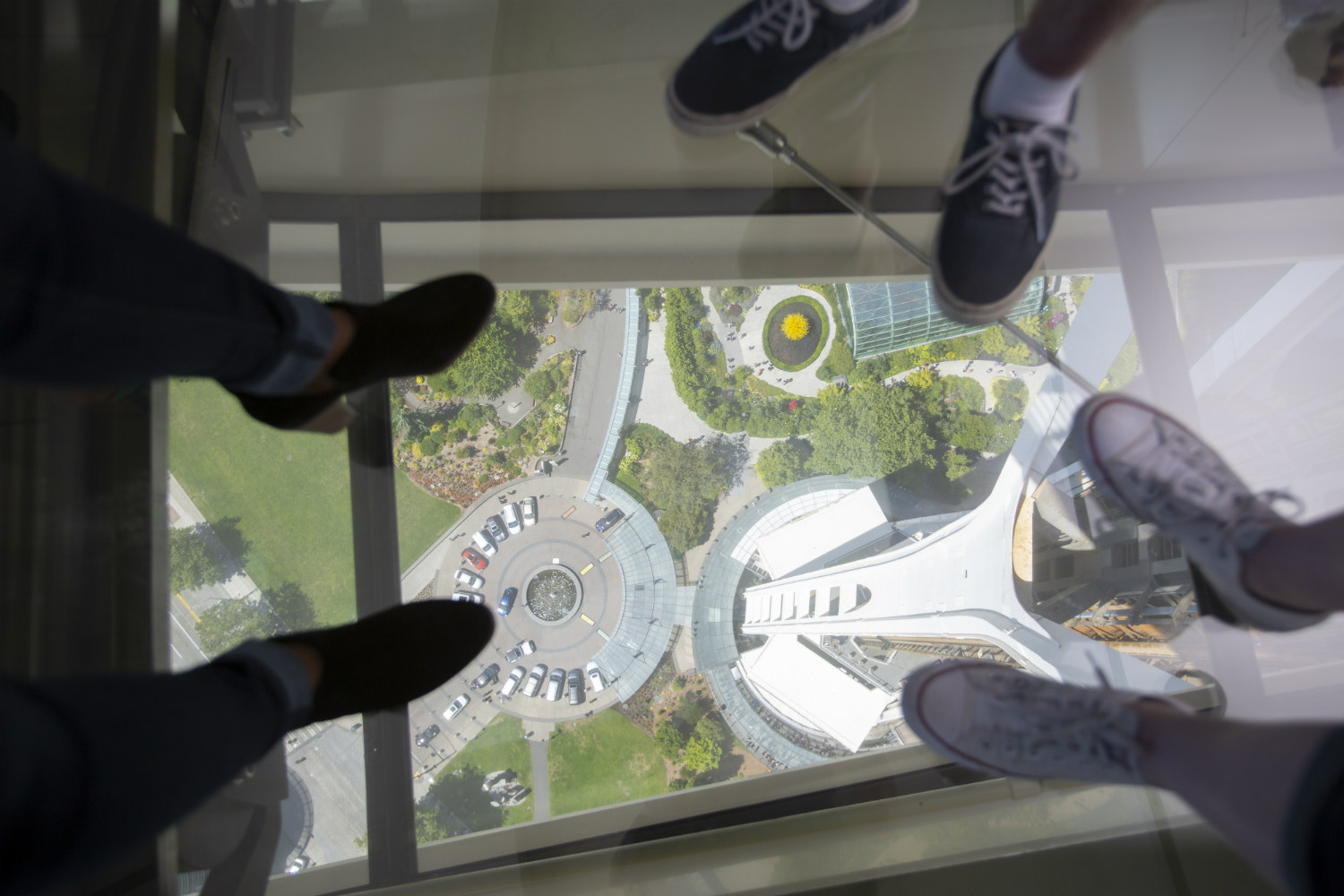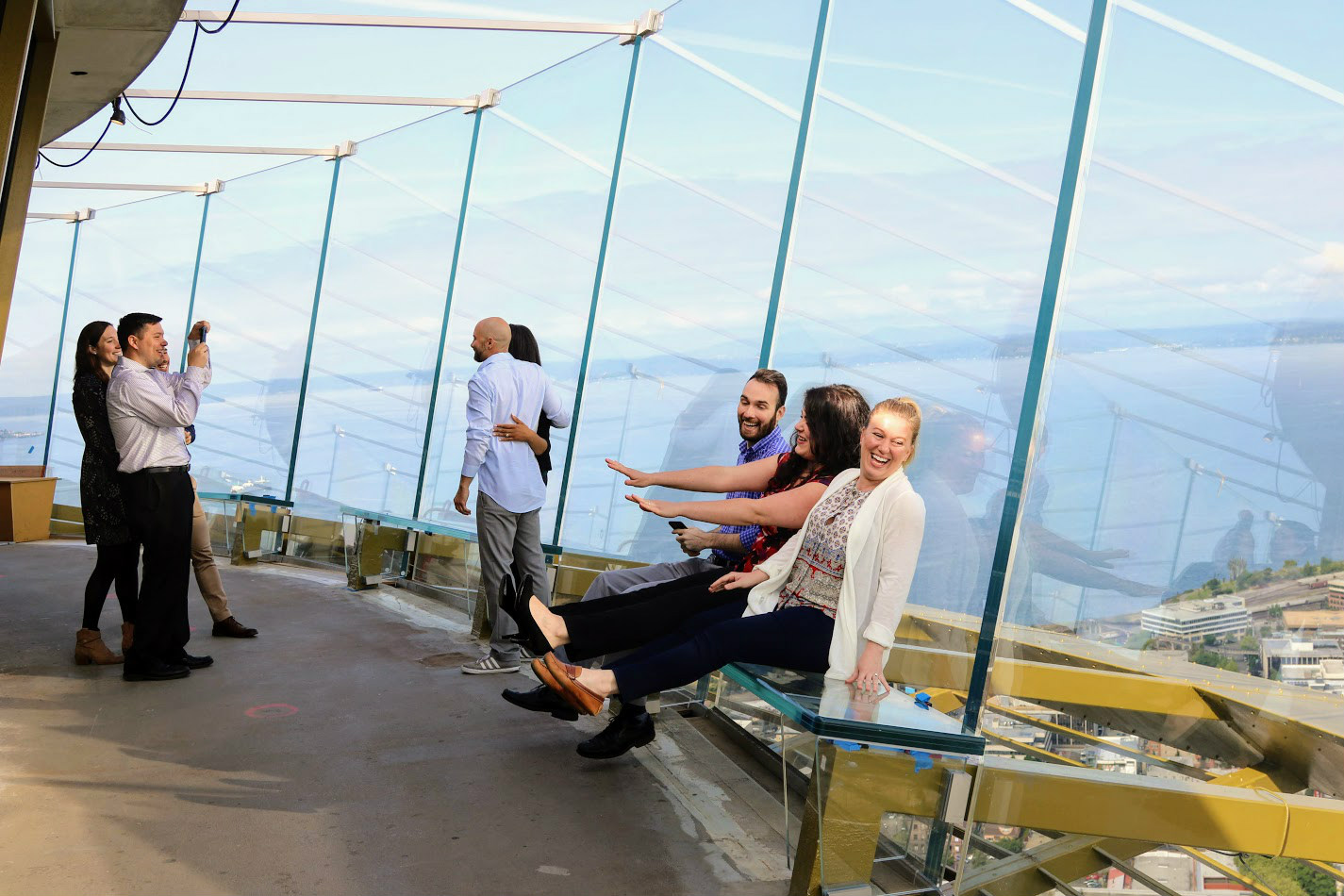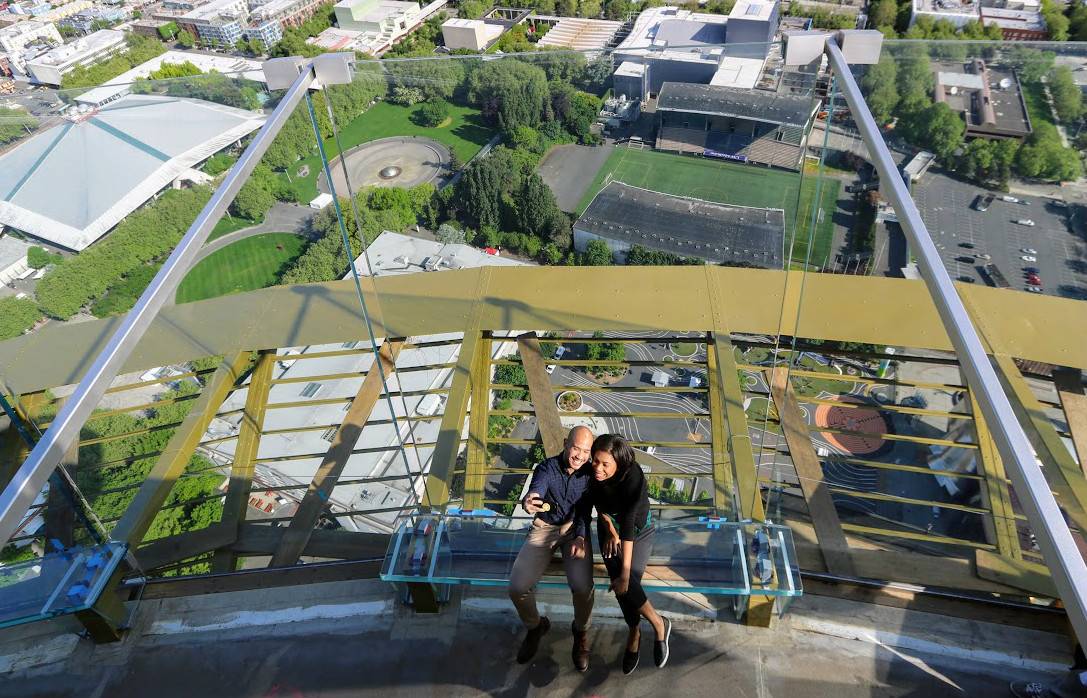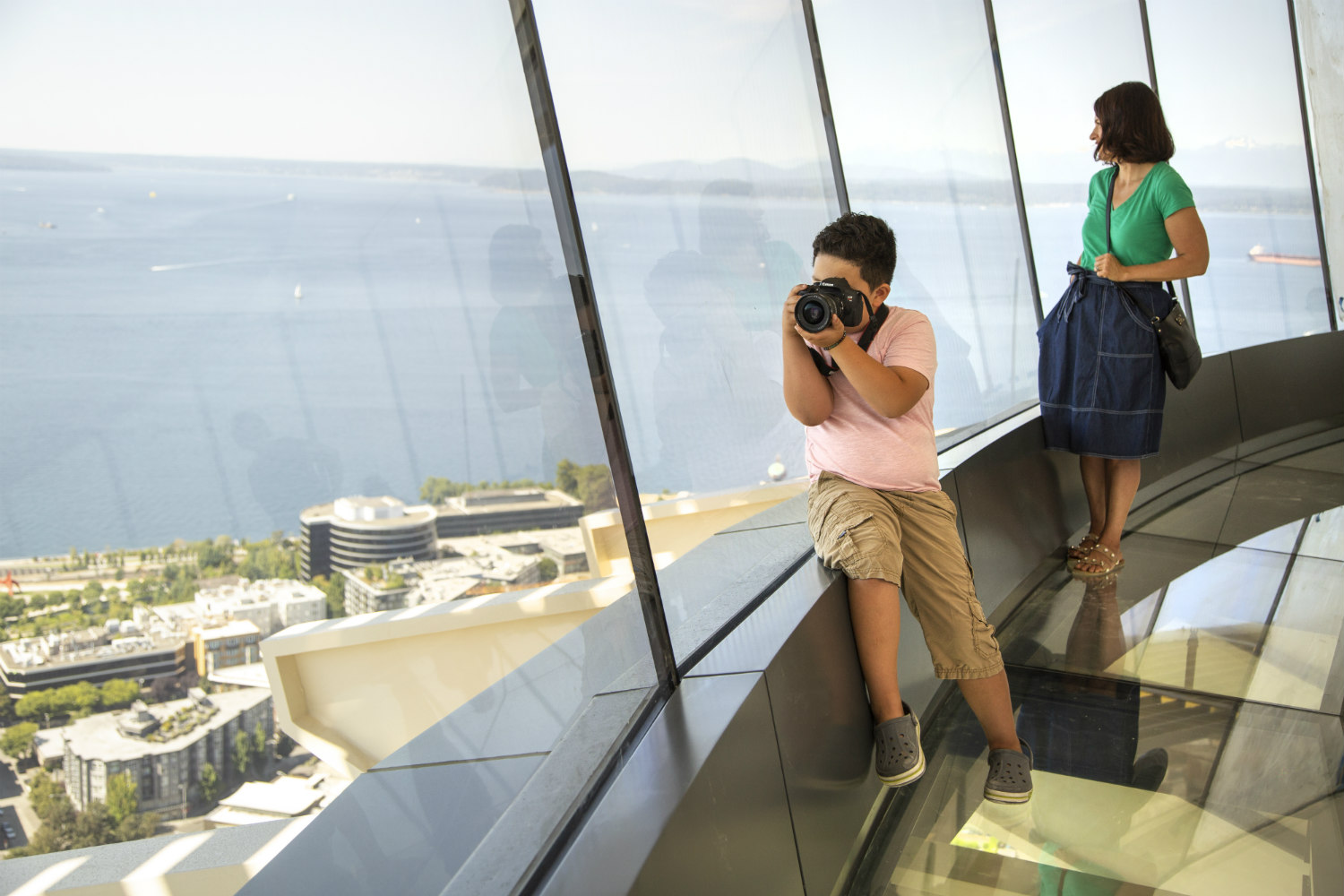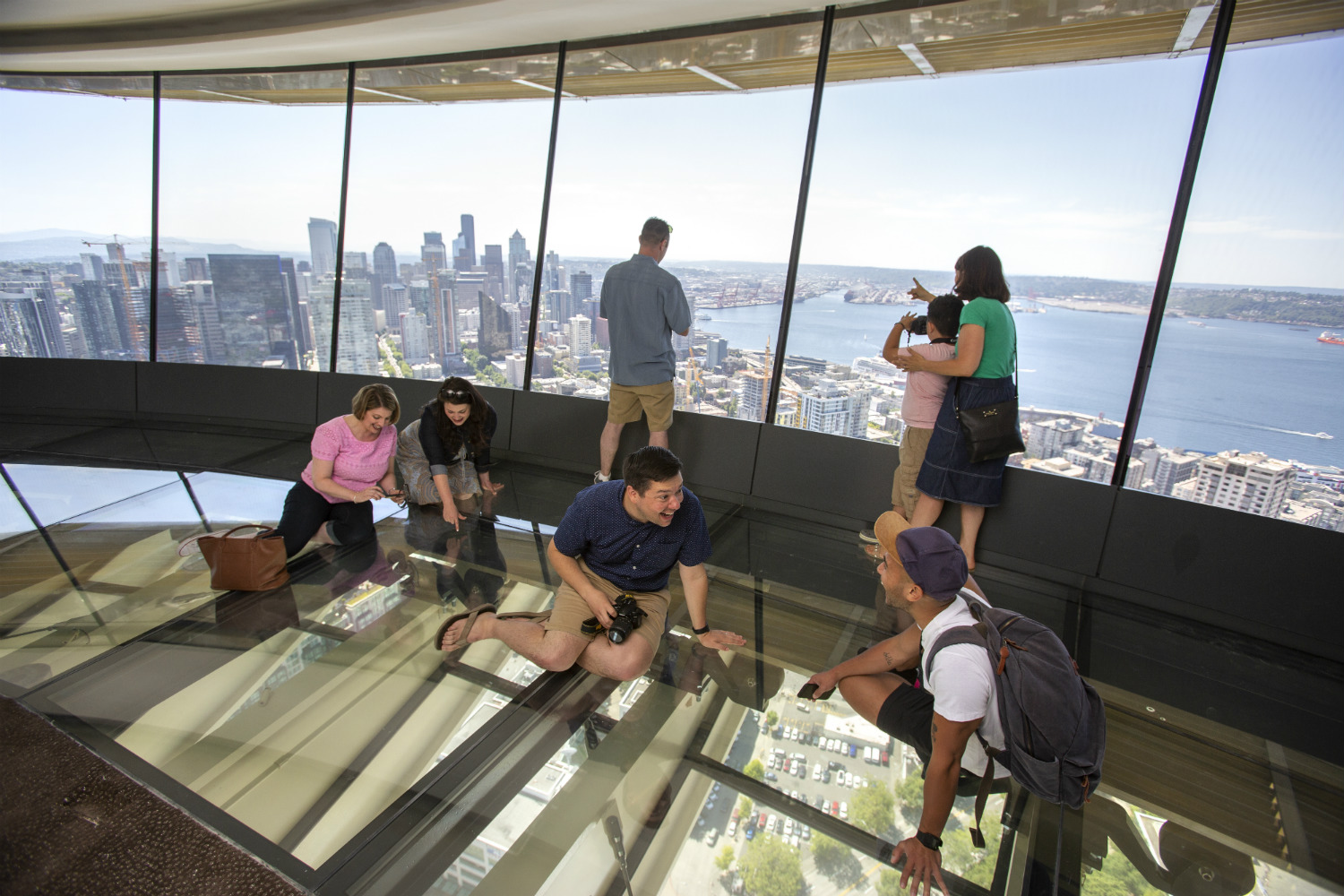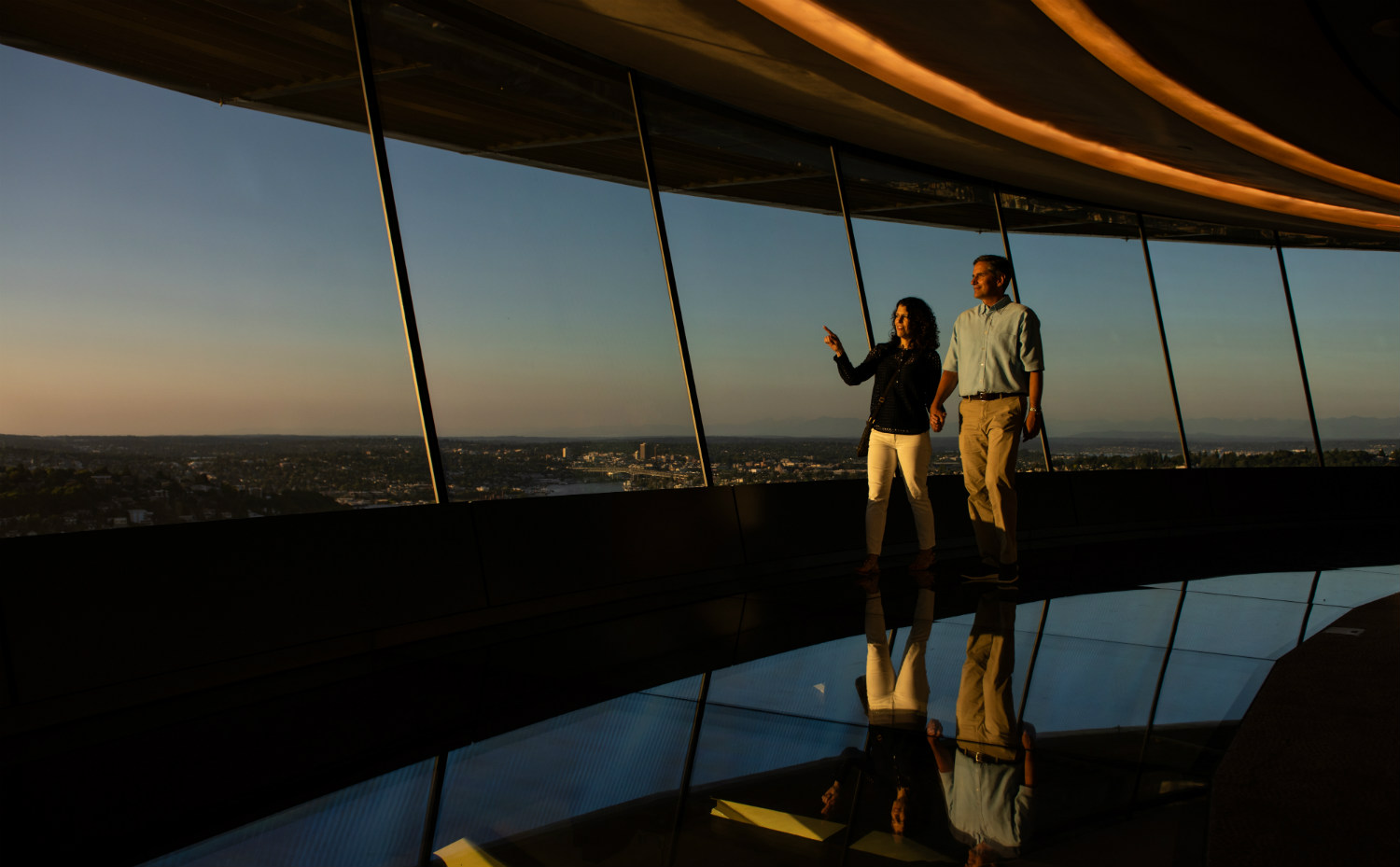Anyone with a fear of heights will do well to avoid Seattle’s Space Needle, especially considering what it’s just done with its observation deck.
Part of a $100 million refit, the city’s iconic tower recently opened what it says is the world’s only revolving glass floor.
Called The Loupe, the new feature allows visitors to stand 500 foot above the city and look directly down onto the streets below, as well as for miles in all directions.
For those in need of reassurance that the glass won’t instantly shatter when they step onto it and sending them screaming through the floor to the ground below, the Space Needle promises its new glass platform is “designed like reinforced concrete.”
In a page-long release offering lots of comforting words on the safety of the glass floor, it goes on: “Each section was custom-designed with multiple redundant layers of structural glass fused together with a high-strength interlayer giving the glass composite a strength capacity up to five times the design loads used for code requirements.”
And for good measure, it adds plenty of calming extras like “extensively tested,” “structural integrity,” and even this beauty: “You could invite the entire Seattle Seahawks’ defense — and all of the offensives they would face in the course of a season — to take a group photo on the glass floor without breaking a sweat.”

As for turning the 37-ton glass floor, 12 motors power 48 rollers located beneath the platform, allowing for a smooth glide that turns it once every 20 minutes at its fastest speed or once every 90 minutes at its slowest.
The glass floor on the lower observation deck and the 11-feet-high floor-to-ceiling windows on the upper deck use a total of 20,000 square feet of glass that help to open up more views of the Emerald City and beyond, while also offering visitors a unique view of the Space Needle’s stem down below.
If your stomach can handle the glass floor, you can also try other new features that have launched as part of the renovations. These include the glass Skyriser benches on the edge of the upper observation deck that lean outward and when you’re seated on them make it look as if you’re suspended in the air.
Built in 1962, the Space Needle rises 605 feet above the city and welcomes more than a million people from around the world every year.
The Space Needle is open from 9 a.m. to 9 p.m. and costs from $27.50 for adults and from $22.50 for children.
